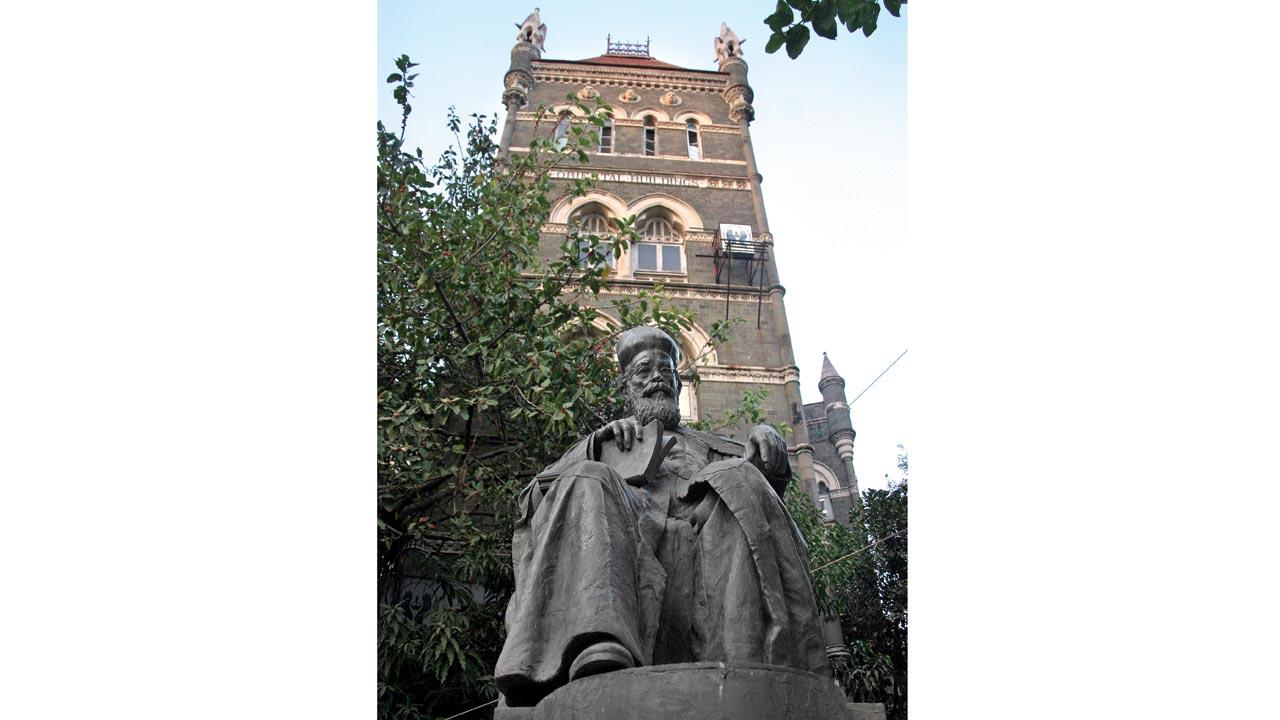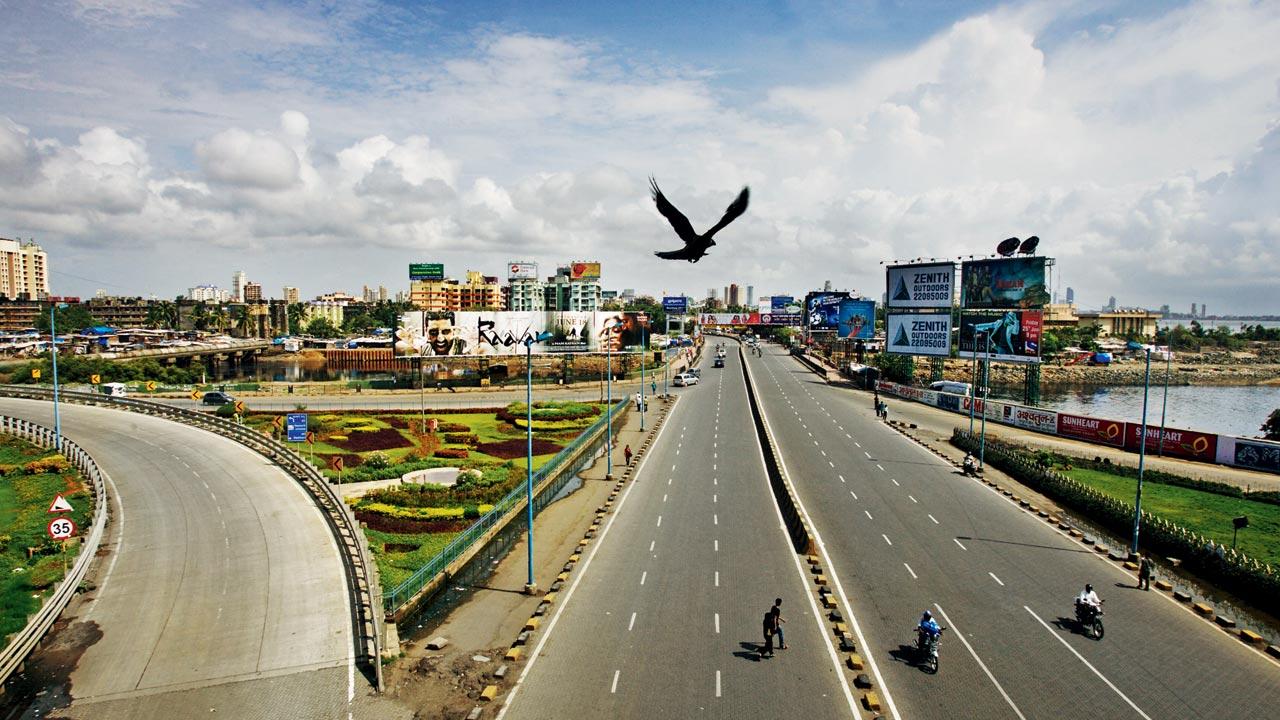Two temporary female residents of Bombay in the 1800s—one, the wife of a judge, the other, a travel writer—leave behind fascinating descriptions of life in our city as revealed in the writings of author-journalist Mohanlal P Gandhi back from the ‘60s, which his daughter chanced upon after his death

A view of Bombay Fort circa 1863. Mrs Postans writes of tents in the open space between the Esplanade and the sea bring set up where people would stay during the hot summers. Pic Courtesy/Making of A Metropolis
Minaxi Kamath stumbled on a book manuscript by her journalist father Mohanlal P Gandhi, which he had sent as proposal to the Municipal Corporation of Greater Bombay. This was after his death in 1996 when she was rummaging through his files left behind with her mother. “Once I read his work,” she writes, “I was struck by the depth of his research…” the Making of A Metropolis: The Story of Bombay (Spenta Multimedia Ltd.) is what Kamath calls an authentic reproduction of a manuscript written in the 1960s.
ADVERTISEMENT
Hailing from Movia in Gujarat, Gandhi, the son of a cotton merchant, was fluent in both English and his mother tongue when he joined the Daily Gazetteer, Karachi’s English language newspaper as writer-translator, and continued his journalistic career in Mumbai after he was forced to leave Pakistan with his wife and five children following the Partition. He retired from Vyapar, a pink paper in Gujarati, in 1974, but continued to read, research and write, says Kamath.
 Dadabhai Naoroji finds himself celebrated across Mumbai, like in this statue outside Oriental Building in Fort. Mrs Postans writes that she had visited some of the English schools and met students who were tested in their ability, including Dadabhoy Naoroji, who, she testified, ‘rendered himself conspicuous by information he possessed’. Pic/Getty Images
Dadabhai Naoroji finds himself celebrated across Mumbai, like in this statue outside Oriental Building in Fort. Mrs Postans writes that she had visited some of the English schools and met students who were tested in their ability, including Dadabhoy Naoroji, who, she testified, ‘rendered himself conspicuous by information he possessed’. Pic/Getty Images
Tracing the city’s evolution from a cluster of fishing villages to India’s commercial capital, Gandhi, in part, relies on the testimonies of visitors to reflect its early cosmopolitan nature and commercial potential. Marianne Postans, a noted travel writer of her day, and the journals of Lady West, wife to Sir Edward West, who had come to Bombay as the king’s judge in the 1820s, discuss everything from flogging to greyhounds for sale by Arab horse dealers.
Edited excerpts.
Mrs Postans’ Bombay
When James Forbes (writer and artist working with the East India Company, who was in western India from 1766 to 1784) was in Bombay, he hardly mentions any other mode of transport except the palanquin (barring horse rides and elephant rides). During the 50 or 60 years that lapsed between his visit and that of Mrs Postans, a veritable transport revolution had taken place in Bombay. ‘An hour’s drive from the ports to the suburbs will exhibit a great variety of the equipage of Bombay. There may be seen the English Landau fresh from Long-Acre, the smart donnet of the military aspirant, the roomy buggee of the mercantile Parsi, the small unassuming double-bodied phaeton, the native shigram or palkee carriage, the richly built chariot of a high class Hindoo and the last the humble bullock hackerie.’ The Esplanade was a fine thoroughfare, much more popular then than now, and crowded.
 A map of Bombay dated 1843 depicting the seven islands. Pic Courtesy/Making of A Metropolis
A map of Bombay dated 1843 depicting the seven islands. Pic Courtesy/Making of A Metropolis
(…) The open space between the Esplanade and the sea in those days served the needs of a hill station in summer when hill stations were so far away and travel so difficult. It is difficult to say when the practice of building temporary shacks on the Esplanade for the hot season started or when it petered out. But it was much in vogue when Mrs Postans was here. She found the Esplanade in the hot season ‘adorned with pretty cool and temporary residences, erected near the sea and the serviceable materials removed at the onset of the monsoon’ to be used again next year. The suburban habit which had caught up with Bombaymen after Forbes had left Bombay, had spread to the native population also. But the suburbia had not yet spread beyond Girgaum, Byculla or Chinchpokli.
(…) The trade had already assumed its present pattern, of innumerable shops offering all sorts of general merchandise and itinerant traders and pedlars going from bungalow to bungalow to vend their varied wares from cloth to imported cutlery and haberdashery. There were some large shops in Fort which replenished their wares with the arrival of English or French ships. Mrs Postans, too, complained of high prices in Bombay, noting with almost a sigh that silks ‘worth three shillings in Europe cost eight’ in these shops and tartly commenting that ‘immense fortunes are made in such shops, the profits on goods being regulated by rules quite opposed to all principles of fair dealing’.
 When Mumbai didn’t have the Mahim Causeway, Lady West writes that commuters had to use a ferry to go to Bandra from Mahim and horses and carriages, too, were ferried across along with their users so as to enable them to go for an outing in the Salsette Island. Pic/Getty Images
When Mumbai didn’t have the Mahim Causeway, Lady West writes that commuters had to use a ferry to go to Bandra from Mahim and horses and carriages, too, were ferried across along with their users so as to enable them to go for an outing in the Salsette Island. Pic/Getty Images
(…) But with all the seeming similarities and minor improvements in the course of time, Mrs Postans’ Bombay was not the same as that of which James Forbes wrote. A profound change had come over the place, partly ascribed to an awakening among the Indians living in the city to the merits of some of the aspects of the Western way of life. Realising that the new administration was here to stay, Indians had also begun to prepare themselves to participate in the new way of life. Mrs Postans was struck by what she termed as ‘the process of un-Indianisation of the social conditions in Bombay’. She added, ‘The present rapid communications with Europe has introduced a very superior class of ideas and interests. The groundwork for so desirable a superstructure as the perfect civilisation of the native gentry is already laid by the college and schools which have lately been started in Bombay...The Elphinstone College and the Native Education Society’s Schools are the great fountains from which the blessings of education may be expected to flow to the people of western India.’ Mrs Postans had visited some of the schools and had noted that among the students there were Hindus, Parsis, a few Portuguese but no Muslims. She was present at one of the schools where some of the students were being tested in their ability and one of the students appearing for the tests was Dadabhoy Naoroji, who, she testified, ‘rendered himself conspicuous by information he possessed’.
(…) By the time she was in Bombay, the native merchants had already grown prosperous and had country houses of their own built in the suburbs. Parsis in her time were the people who had grown immensely rich. ‘Year by year’, she wrote, ‘the importance of Geubre (a term for the Parsis used both by James Forbes and Mrs Postans) strangers has increased in India until their wealth has become incalculable. ‘The number of Parsi inhabitants of Bombay is alone estimated at forty thousand. The richest Parsi in Bombay is Jamshetji Jejeebhoy. This gentleman is the largest shipowner in the docks extending employment to nearly three thousand persons.’ Armenians as a mercantile community had somewhat lost their importance at the time of Mrs Postans’ visit to Bombay. She noted that there were less Armenians in Bombay and those that were residents chiefly came from Bushire or Busserah (Basra) and traded in gems and horses and amassed considerable wealth. To Armenians, Bombay owes the manufacture of one of her most popular sweets, the halwa. Mrs Postan had alluded to the Armenians’ fondness for this sweet and had mentioned it as being brought to Bombay from Bushir in earthern saucers.
Bombay in Lady West’s Journal
In the 1820s when Sir Edward West had come to Bombay as the king’s judge, his wife, Lady West, kept a journal, entries in which throw some interesting light on the life Bombay of the day. Flogging was still rampant, and Europeans were freely indulging in it to chastise their servants for their lapses, real or imaginary. Medical science had yet to develop and bleeding, administering calomel32 and sticking of blisters were the remedies resorted to, in the event of serious illnesses. The mortality rate in the city was very high, and death struck sometimes unpredictably. On the death of an acquaintance whom the blow struck two days after a visit, Lady West wrote: ‘Here people die one day; are buried the next, their furniture sold on the third and they are forgotten on the fourth.’
Horse carriages had become a common means of transport by this time in Bombay, but the use of palanquins was still widespread. One had still to use a ferry to go to Bandra from Mahim and horses and carriages, too, were ferried across along with their users so as to enable them to go for an outing in the Salsette Island. Lady West has described the ferrying scene. ‘The ferrying over is a curious process. There is a large cage put upon two boats. The horses are taken off, and one is pushed up the inclined plane into this cage in one’s carriage. The horses stand by the side and in a quarter of an hour, one is rowed over.’ Marriages among the ‘natives’ were performed at a very early age, Lady West noted. She attended a twin wedding, in which the six-year-old daughter and the 11-year-old son of Hormusjee Bomanjee were wedded to their first cousins. She also refers to ‘a Hindu who had lost his caste’ and to regain it had to measure his length ‘for seven miles in the dirt’.
Reproduced with permission from Making of a Metropolis: The Story of Bombay by Mohanlal P Gandhi
 Subscribe today by clicking the link and stay updated with the latest news!" Click here!
Subscribe today by clicking the link and stay updated with the latest news!" Click here!








